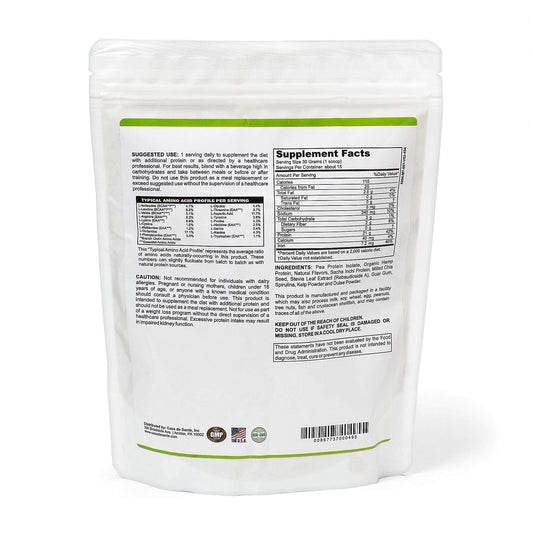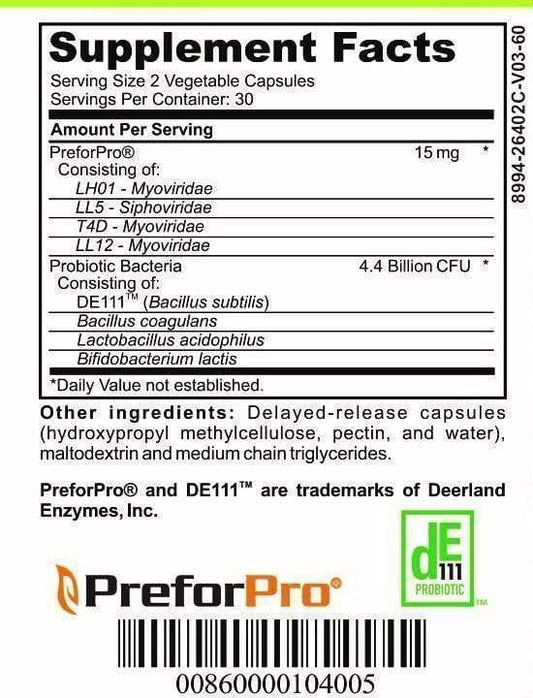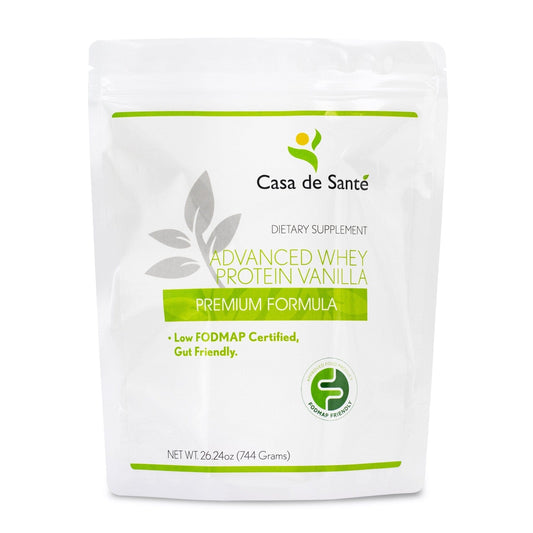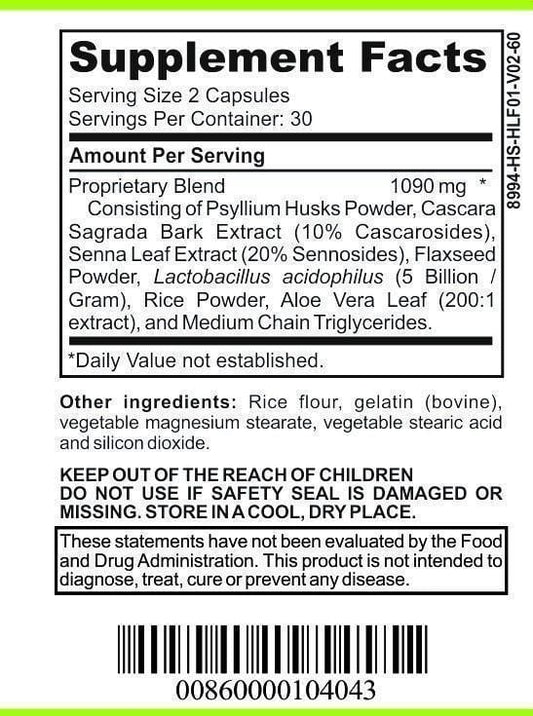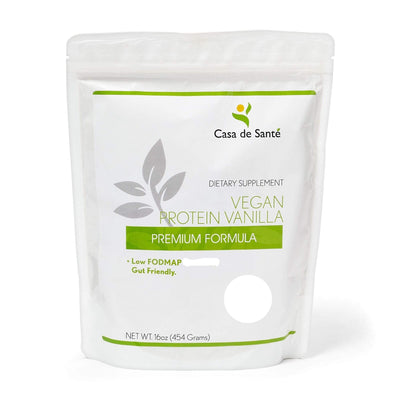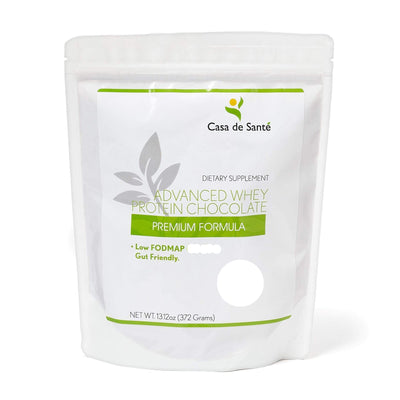Is Farro Low FODMAP
Is Farro Low FODMAP
Farro has gained popularity as a nutritious and versatile grain, but for those following a low FODMAP diet, it's important to understand if farro is suitable. In this article, we will explore the concept of FODMAPs, delve into the nutritional profile of farro, examine its FODMAP content, and provide alternatives for those looking to follow a low FODMAP diet. We will also discuss the importance of consulting a dietitian to tailor the diet to individual needs.
Understanding FODMAPs
FODMAPs are a group of carbohydrates that can be challenging to digest for some individuals. The term "FODMAP" stands for Fermentable Oligosaccharides, Disaccharides, Monosaccharides, and Polyols. These compounds can trigger digestive symptoms in people with irritable bowel syndrome (IBS) or other digestive disorders. By following a low FODMAP diet, individuals can identify and manage their triggers to alleviate symptoms.
What are FODMAPs?
FODMAPs encompass various carbohydrates, including fructose, lactose, fructans, galactans, and polyols. These carbohydrates are found in a wide range of foods, including fruits, vegetables, grains, legumes, dairy products, and sweeteners. When these carbohydrates are poorly absorbed in the small intestine, they travel to the large intestine, where they are fermented by gut bacteria, leading to symptoms such as bloating, gas, abdominal pain, and diarrhea or constipation.
Fructose, a type of FODMAP, is commonly found in fruits such as apples, pears, and watermelon. Lactose, another type of FODMAP, is present in dairy products like milk, yogurt, and ice cream. Fructans, which are chains of fructose molecules, can be found in wheat, rye, and onions. Galactans, found in legumes like beans and lentils, are another type of FODMAP. Lastly, polyols, which include sugar alcohols like sorbitol and mannitol, are often used as sweeteners in sugar-free gum and candies.
It is important to note that not all carbohydrates are FODMAPs, and not all individuals will have difficulty digesting them. However, for those with IBS or other digestive disorders, identifying and avoiding high FODMAP foods can be beneficial in managing their symptoms.
Why are Low FODMAP Diets Important?
Research has shown that following a low FODMAP diet can help reduce symptoms in individuals with IBS and other digestive disorders. By eliminating or reducing high FODMAP foods, such as certain grains, individuals can better manage their symptoms and improve their overall quality of life.
One study published in the Journal of Gastroenterology and Hepatology found that 75% of participants with IBS experienced symptom improvement when following a low FODMAP diet. Another study published in the American Journal of Gastroenterology showed that a low FODMAP diet reduced bloating and improved stool consistency in individuals with IBS.
It is important to note that a low FODMAP diet is typically followed for a short period under the guidance of a healthcare professional or dietitian, as some high FODMAP foods provide essential nutrients. For example, wheat is a significant source of dietary fiber, B vitamins, and minerals. Therefore, individuals following a low FODMAP diet may need to work with a dietitian to ensure they are still meeting their nutritional needs.
Overall, a low FODMAP diet can be an effective tool for managing digestive symptoms in individuals with IBS or other digestive disorders. By identifying and avoiding high FODMAP foods, individuals can take control of their symptoms and improve their overall well-being.
The Nutritional Profile of Farro
Farro, also known as emmer wheat, is a type of ancient grain that has been cultivated for thousands of years. It has a unique nutty flavor and chewy texture, making it a delicious addition to various dishes. Let's take a closer look at the nutritional benefits this grain offers.
What is Farro?
Farro is a whole grain that is rich in fiber, protein, complex carbohydrates, vitamins, and minerals. It is a good source of nutrients like magnesium, iron, and zinc. As a whole grain, farro contains all three parts of the grain kernel – the bran, germ, and endosperm – which contribute to its nutritional value.
When it comes to fiber, farro is a standout. Just one cup of cooked farro contains about 8 grams of fiber. This high fiber content supports digestive health by promoting regular bowel movements and preventing constipation. Additionally, fiber helps regulate blood sugar levels by slowing down the absorption of glucose into the bloodstream, making farro a great choice for individuals with diabetes or those looking to manage their blood sugar levels.
Farro is also a great source of protein, especially for those following a plant-based diet. It contains all nine essential amino acids, making it a complete protein. Protein is essential for building and repairing tissues, supporting immune function, and producing enzymes and hormones. Including farro in your meals can help ensure you're meeting your daily protein needs.
In addition to fiber and protein, farro is packed with complex carbohydrates. These carbohydrates are digested slowly, providing sustained energy throughout the day. This makes farro an excellent choice for athletes or individuals looking to maintain a healthy weight. The slow release of energy from complex carbohydrates helps keep you feeling fuller for longer, reducing the likelihood of overeating or reaching for unhealthy snacks.
Farro is also abundant in vitamins and minerals. It is a good source of magnesium, which plays a crucial role in over 300 biochemical reactions in the body, including energy production, muscle function, and bone health. Iron is another important nutrient found in farro, and it is essential for the production of red blood cells and oxygen transport throughout the body. Additionally, farro provides zinc, a mineral that supports immune function, wound healing, and DNA synthesis.
Health Benefits of Farro
Including farro in your diet can provide numerous health benefits. Its high fiber content supports digestive health and helps regulate blood sugar levels. The complex carbohydrates in farro provide sustained energy and can be beneficial for athletes or those seeking healthy weight management. Farro is also abundant in antioxidants, which help protect the body against oxidative stress and inflammation.
Oxidative stress occurs when there is an imbalance between free radicals and antioxidants in the body. Free radicals are unstable molecules that can cause damage to cells and contribute to the development of chronic diseases such as heart disease, cancer, and diabetes. Antioxidants, on the other hand, help neutralize free radicals and reduce the risk of these diseases. Farro contains various antioxidants, including phenolic compounds and lignans, which have been shown to have anti-inflammatory and anti-cancer properties.
Furthermore, farro is a versatile grain that can be incorporated into a wide range of dishes. It can be used as a base for salads, added to soups and stews, or even used to make delicious risottos and pilafs. Its nutty flavor and chewy texture add depth and complexity to any meal, making it a favorite among chefs and home cooks alike.
So, whether you're looking to boost your fiber intake, increase your protein consumption, or simply add more variety to your meals, farro is an excellent choice. Its nutritional profile and health benefits make it a valuable addition to a balanced diet.
Farro and FODMAPs
Now, let's address the important question: is farro low in FODMAPs? For individuals following a strict low FODMAP diet, the answer is no. Farro contains moderate to high amounts of FODMAPs, specifically fructans. Fructans are a type of carbohydrate that some individuals may have difficulty digesting, leading to gastrointestinal symptoms.
Is Farro Low in FODMAPs?
Farro contains fructans, which are classified as high FODMAPs. These fructans can trigger symptoms in individuals with sensitivities. Therefore, those following a low FODMAP diet should avoid farro or consume it in small quantities depending on their tolerance levels. It's important to note that sensitivities to FODMAPs can vary among individuals, and some may be able to tolerate small amounts of farro without experiencing symptoms.
How to Incorporate Farro into a Low FODMAP Diet
If you are determined to enjoy farro while following a low FODMAP diet, there are ways to include it while minimizing FODMAP intake. Soaking farro before cooking and discarding the soaking water can help reduce its FODMAP content. Additionally, cooking farro until it is well-cooked and tender may help break down some of the FODMAPs. However, it is crucial to note that these methods may not eliminate all the FODMAPs present, and individual tolerance levels will still vary.
Alternatives to Farro for a Low FODMAP Diet
If you're following a low FODMAP diet and looking for alternatives to farro, there are other grains you can consider that are lower in FODMAPs and still provide essential nutrients.
Other Grains to Consider
Some grains that are generally considered low in FODMAPs include quinoa, rice, millet, and buckwheat. These grains can be used as substitutes for farro in recipes, providing a similar texture and versatility. Experimenting with these grains can add variety to your low FODMAP diet while ensuring that you meet your nutritional needs.
Tips for a Balanced Low FODMAP Diet
Following a low FODMAP diet requires careful planning to ensure you are getting a well-balanced intake of all essential nutrients. Here are a few tips to keep in mind:
- Consult a dietitian: A registered dietitian specializing in digestive health can provide personalized guidance and ensure you are meeting your nutritional needs while following a low FODMAP diet.
- Read labels carefully: Many packaged foods contain high FODMAP ingredients, so it's essential to check ingredient lists for potential trigger foods.
- Experiment with small portions: Foods that are typically considered high FODMAP may vary in tolerated portion sizes. Start with small amounts and monitor your symptoms to determine your own threshold.
- Focus on variety: Incorporate a wide range of low FODMAP foods to ensure you're getting a complete range of essential nutrients.
- Stay hydrated: Drinking enough water is crucial for digestive health, so make sure to stay hydrated throughout the day.
Consulting a Dietitian for a Low FODMAP Diet
When it comes to implementing a low FODMAP diet, consulting a dietitian is highly recommended. They can provide personalized advice and guidance tailored to your individual needs and circumstances.
When to Seek Professional Advice
If you suspect that FODMAPs may be triggering your symptoms or if you have been diagnosed with IBS, it is advisable to seek professional advice. A dietitian experienced in the low FODMAP diet can help you navigate the complexities of the diet, ensuring adequate nutrient intake while minimizing symptoms.
Tailoring Your Diet to Your Needs
Working with a dietitian is essential for tailoring your low FODMAP diet to your specific needs. They can guide you through the elimination phase to identify specific trigger foods and help you reintroduce high FODMAP foods one at a time to determine your individual tolerance levels. With their help, you can develop a long-term diet plan that suits your lifestyle and dietary preferences while managing your digestive symptoms effectively.
In conclusion, for individuals following a low FODMAP diet, farro is not a suitable choice due to its moderate to high FODMAP content. However, there are plenty of alternative grains that can be enjoyed while following a low FODMAP diet. It's important to consult a healthcare professional or registered dietitian to ensure that your diet is well-balanced and tailored to your individual needs. By understanding FODMAPs and making informed dietary choices, individuals can successfully manage their digestive symptoms and improve their overall well-being.


